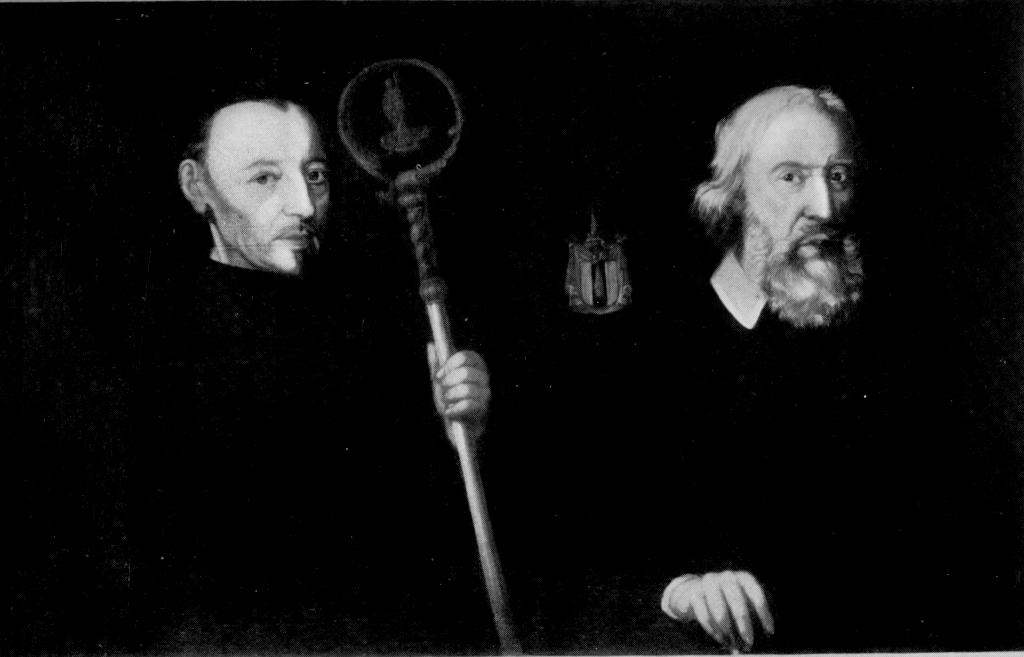
John Gascoigne, Abbot of Lamspringe (left) and Sir Thomas Gascoigne
From a portrait at Lotherton Hall taken form
Colman's "History of the Parish of Barwick-in-Elmet".
| Assessment | Tax paid | |
| £ | £ | |
| John Gascoigne, recusant | 13.6.8. | 5.6.8. |
| Richard Vevers | 2.0.0. | 40.8.0. |
| John Taylor | 1.10.0. | 0.6 0. |
| Thomas Rawson | 1.0.0. | 0.4.0. |
| William Wavers | 1.0.0. | 0.4.0. |
| John Hardcastle | 2.0.0. | 0.8.0. |
| Robert Sayner | 1.0.0. | 0.4.0. |
| Martin Cloughe | 1.0.0. | 0.4.0. |
| Richard Potter, sen. | 1.0.0. | 0.4.0. |
| John Layton, gent. | 1.0.0. | 0.4.0. |
| William Roydhouse | 1.0.0. | 0.4.0. |
| Richard Potter, jun. | 1.0.0. | 0.4.0. |
| Thomas Tailer | 1.0.0. | 0.4.0. |
| John Haighe | 1.0.0. | 0.4.0. |
| John Daniell | 1.0.0. | 0.4.0. |
| Willam Briggs | 1.0.0. | 0.4.0. |
| Robert Greenwood | 1.0.0. | 0.4.0. |
| Sum | 9.0.8. |
Recusants: Thomas Ellis Widow Ellis Marmaduke Beckwith and his wife The wife of James Marshall Lasingcroft Widow Oglethorpe Barnbow The wife of John Gascoigne Thomas Gascoigne and his wife Matthew Bywater and Peter Slater, servants of John Gascoigne Edward Bennett and Grace his wife Thomas Stuthard and his wife Nicholas Shippen and his wife The wife of Cuthbert Massey Widow Daniell Henry Brame and his wife and his son Samuel Brame Shippen Richard Clarkson and his wife Robert Johnson and his wife Widow Hunt Widow Harrison Widow ffield Widow Tompson Sum 20s. 8d |

ARTHUR BANTOFT |